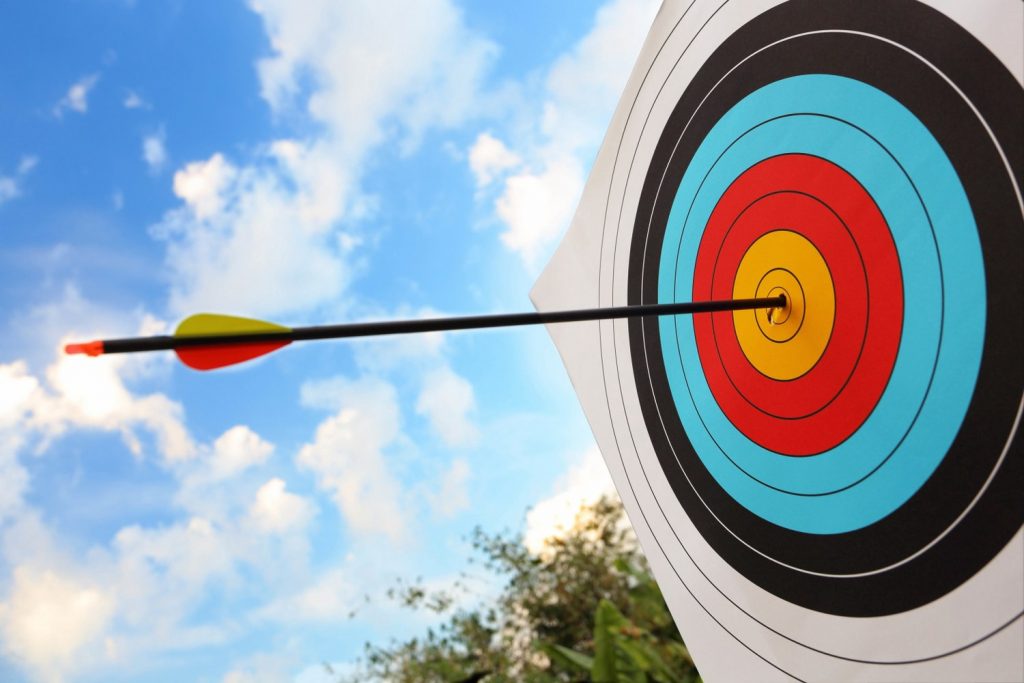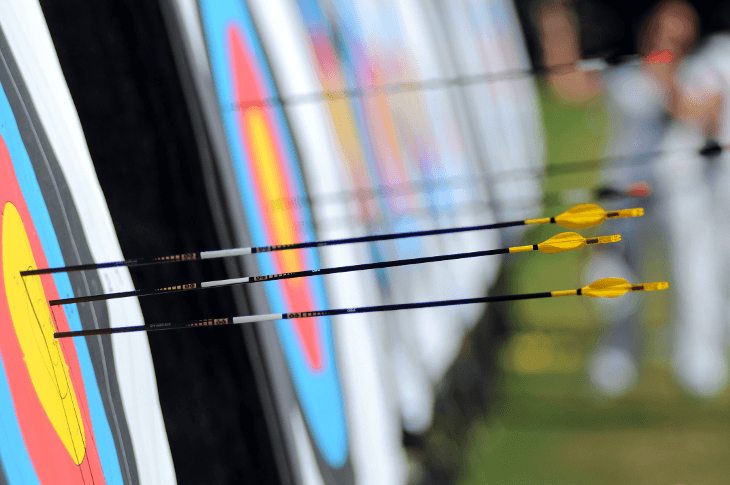Arrow length is one of the most important factors of an arrow’s flight.
The commonly held belief is that an arrow should be just equal to, or slightly longer than, the bow’s set up draw length. Following this convention, most would assume that if a bow has a 28-inch draw, it should shoot a 28-inch or longer arrow. However, this is not always the case. Technology has improved so much that this traditional convention may not always be the best for your particular rig. You might find that the best arrow for you is slightly shorter than the draw length. Here are a few questions to ask to help you buy arrows correctly.

-
What kind of riser do you shoot?
There are a lot of factors at play when determining optimum arrow length, but a good place to start is with your bow’s riser. The ‘riser’ is the handle component of the bow to which the limbs attach. Traditionally risers typically use a molded plastic ‘flipper’ arrow rest. With a traditional riser your arrow, along with the center of your firing line, will lie right next to the riser, potentially causing some interference to the flight of the arrow.
Alternatively, you may have a cutaway riser, that provides a larger shelf for the arrow, and the riser is moved to the side. With this type of riser, your arrow and its flight path are spaced far enough from the riser that there will be no contact with the riser and the arrow’s fletching. This is the most common type of riser amongst modern compound bows.
So what does this have to do with the length of arrow you buy? Well, if you purchase arrows of a length equal to your draw length, the insert of the arrow should line up perfectly with the front edge of your bow’s riser. However, if you are using a cutaway style riser, you can shoot arrows that are less than the draw length. Compare this to a traditional riser, which requires you to use an arrow slightly longer than draw length so that the tip of the arrow extends beyond the front of the riser.
-
Do you shoot broadheads or other specialty tips?
If your bow features a traditional riser then your arrows must be at least as long as your draw length if you ever hope to shoot broadheads or other specialties, large-diameter tips. Otherwise, every time you draw the arrow, the broadhead would catch on the front of the riser and stop your draw. A half-inch to an inch longer than your bow’s adjusted draw length should work just fine.
If your bow does have a cutaway riser, you can be a little more flexible in how short of an arrow you use, simply because a cutaway riser can easily accommodate a broadhead. Most competitive compound shooters trim their arrows as short as possible in an attempt to make their arrows as fast as possible. The general equation is the shorter your arrow, the lighter it is and the faster and farther it will fly. For this type of riser, buy or trim arrows that are a half-inch to an inch longer than your arrow rest.
Some small game tips require that you use longer arrows regardless of your riser type. For instance, Judy Points and Condor Tips, very wide hunting tips meant for shooting small game require arrows longer than the draw length even if you are using a cutaway riser.
-
What type of arrow rest do you use?
Particularly with cutaway risers, the type of arrow rest in operation will also need to be considered when determining optimum arrow length. In older rigs, archers used to use a device known as an over-draw that would extend the arrow rest further back. This was done to allow the archer to shoot shorter and faster arrows.
While no longer in use, the over-draw and other types of arrow rest require different lengths of arrows even if draw length remains consistent. For instance, the traditional arrow rest will position the arrow 1-2 inches below draw length. If you use a whisker biscuit style rest, you can use arrows 2-3 inches less than draw. Finally, the Muzzy Zero allows for arrows up to 4 inches less than a draw, almost even with the rear of the riser.
Regardless of the type of riser, the easiest way to check for this is to simply draw and hold an arrow while a friend makes a mark on the arrow where it sits on the rest during full draw. Finally, as a general recommendation, give yourself a half-inch to an inch of ‘confidence’ space beyond your rest. Over time, your bowstring will relax and stretch, and you will be left with arrows that are too short.
-
Should I trim my arrows myself?
When you buy arrows for sale, you have the option of either having the arrows shipped to you at the ideal length or more commonly, the arrows you buy will intentionally be left a few inches long so that they can be trimmed to length. Usually, there is no extra fee for an archery shop to trim and add inserts to your arrows.
If you have carbon arrows, keep in mind that they must only be cut with a high-speed wheel saw using an abrasive disk, such as a Dremel tool. Using a hacksaw or plumber’s saw can splinter the carbon fibers in the arrow, making them a potential safety hazard to shoot. With the right equipment, and always measuring twice, trimming your arrows to fit your custom setup is far from difficult.
Stay tuned for most posts on buying and selecting the best gear for your archery training!
Tags: Buy Arrows

